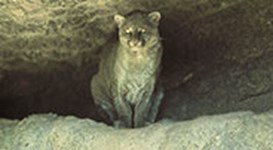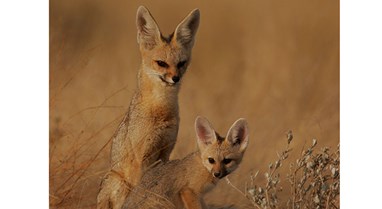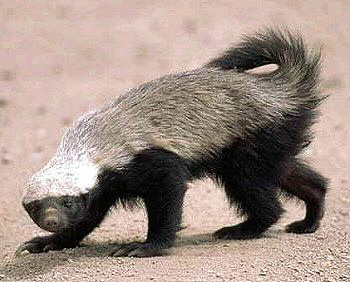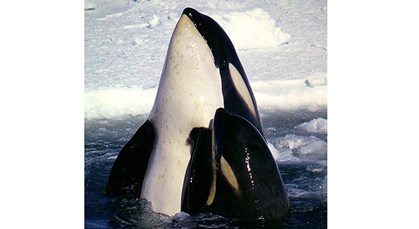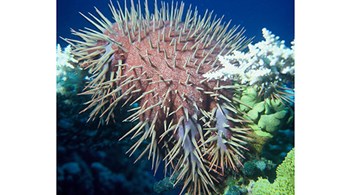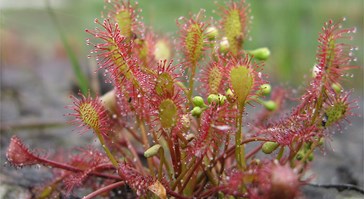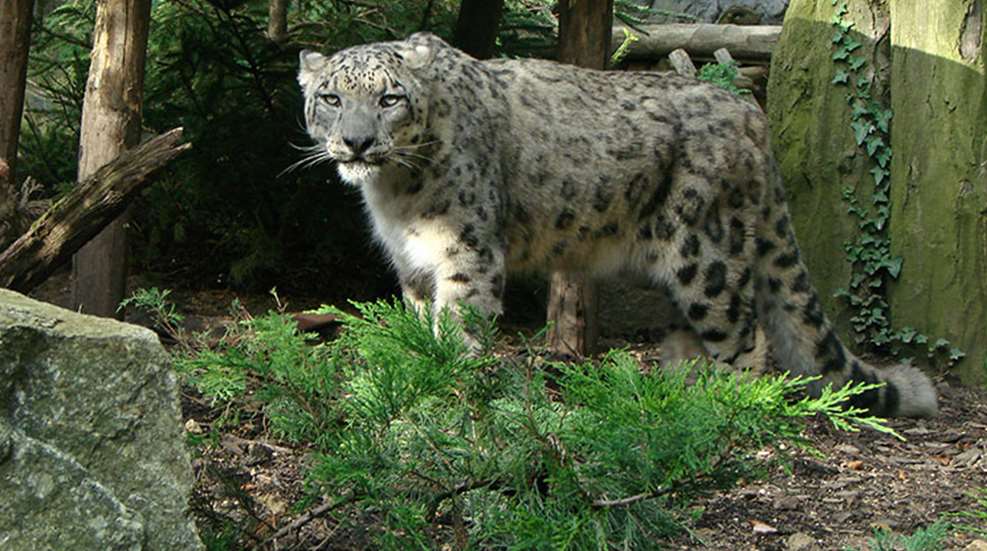
King of the Mountain
The snow leopard, sometimes called an “ounce,” reigns over the mountains of Central Asia. Despite its name, this predator is actually not very closely related to the true leopards-it belongs to its own genus (Uncia), and it cannot roar. Well-adapted for its frigid native environment, the snow leopard has long, thickly furred tail that it uses to cover its sensitive nose when it's resting. Snow leopards have been known to prey on animals three times their size, and can leap up to 46 feet. With only about 6,000 snow leopards living in the wild, this species is considered endangered.
Little Lion
If you live in the Western Hemisphere, you've heard of the cougar, the jaguar, the bobcat and the lynx. But have you ever heard of the jaguarundi? Found from southern Texas through much of South America, this close relative of the puma is only about 30 inches long and generally weighs no more than 13 pounds-so it's not much bigger than a housecat. With its short legs, tiny rounded ears and long, flattened tail, this feline almost looks more like an otter than a cat. Many South Americans term it the “leoncillo,” which means “little lion.” It is said that many native Central Americans tamed the jaguarundi and kept them around their villages to kill rodents.
Jackal Yackity-Yack
Not all predators are silent. Exhibit A: the jackal. This famously noisy member of the canine family occupies a place in Africa's ecosystem similar to that of America's coyote. Jackals are one of the few mammal species in which the male and female mate for life, and the mated pairs defend their territory aggressively. They communicate with each other with yells, yapping and howls. Resilient and adaptive, the jackal thrives in desert, savannah and near human settlements. The ancient Egyptians took notice-their god of embalming, Anubis, is represented as a man with a jackal's head.
Not All Honey is Sweet
The honey badger, also known as a “ratel,” isn't a terribly big animal. At 30 to 52 inches long, including the tail, and weighing in at 22 to 30 pounds, this relative of the weasel is about the size of a Schnauzer. But what it lacks in size, the honey badger makes up for in raw attitude. Named “the most fearless animal in the world” by the Guiness Book of World Records, the honey badger measures its mettle by the fearsomeness of its prey. This critter hunts and eats porcupines, crocodiles up to a yard long, scorpions, and, most famously, venomous snakes like cobras and asps. Found in Africa and parts of Asia, the honey badger got its name from its taste for beehives-it's happy to brave the stings to get its favorite dessert. Although it's true that honey badgers occasionally fall prey to lions and leopards, it doesn't happen often.
Sea Wolf
You probably already know that orcas are also known as killer whales. And you probably already know that they hunt in packs like wolves. (A group of orcas is called a “pod.”) What few people understand is just how efficient and intelligent these apex predators truly are. Orcas have been known to push waves across ice floes to wash the seals resting on the floes into the water-and into the waiting jaws of the pod. They will surround a whale long enough to prevent it from getting to the ocean's surface to breathe, drowning it. Orcas will even beach themselves-that is, come right up out of shallow water and onto the sand-in pursuit of sea lions. Even great white sharks aren't safe from a pod of hungry orcas!
The Hungry Star
Just this one time, you can go ahead and judge a book by its cover: This starfish is just as nasty as it looks. Called the Crown-of-Thorns starfish, it's named for the sharp spines that rise from its body. These spines will go right through a diver's wetsuit, which is bad enough, but they're also loaded with a venomous neurotoxin that causes pain and swelling. The Crown-of-Thorns, a carnivorous sea star, dines on reef coral polyps. They don't use a fork and spoon, though: Like all sea stars, they extrude their stomachs out of their bodies onto the coral, releasing digestive juices that liquefy their meals. Crown-of-Thorns grow to the size of a dinner plate, and they eat a lot: A single starfish can eat up to 65 square feet of coral reef a year. When the starfish overpopulates (an event called an “outbreak”), it threatens the coral reef ecosystem.
No Heartbeat, No Problem
Even plants can be predators. Case in point: the sundew. This carnivorous plant is named for the little drops that decorate their leaves. But those aren't dewdrops-that's glue. And those leaves can move like tentacles! The sundew thrives in poor soil by supplementing itself with the nutrients it finds from insects that it catches. When an insect lands on the leaves, they're first ensnared by the mucilage, then the sensitive tentacle bends around it, crushing the insect further into the glue. The plant then secretes enzymes that dissolve and digest the insect.
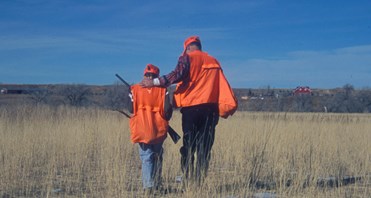 We've met some of the coolest, weirdest and scariest predators on Earth, from killer whales to sticky plants. But still we have an unanswered question: Which among Earth's predators is the most effective, the most fearsome, the most intelligent of all? Well...
We've met some of the coolest, weirdest and scariest predators on Earth, from killer whales to sticky plants. But still we have an unanswered question: Which among Earth's predators is the most effective, the most fearsome, the most intelligent of all? Well...

